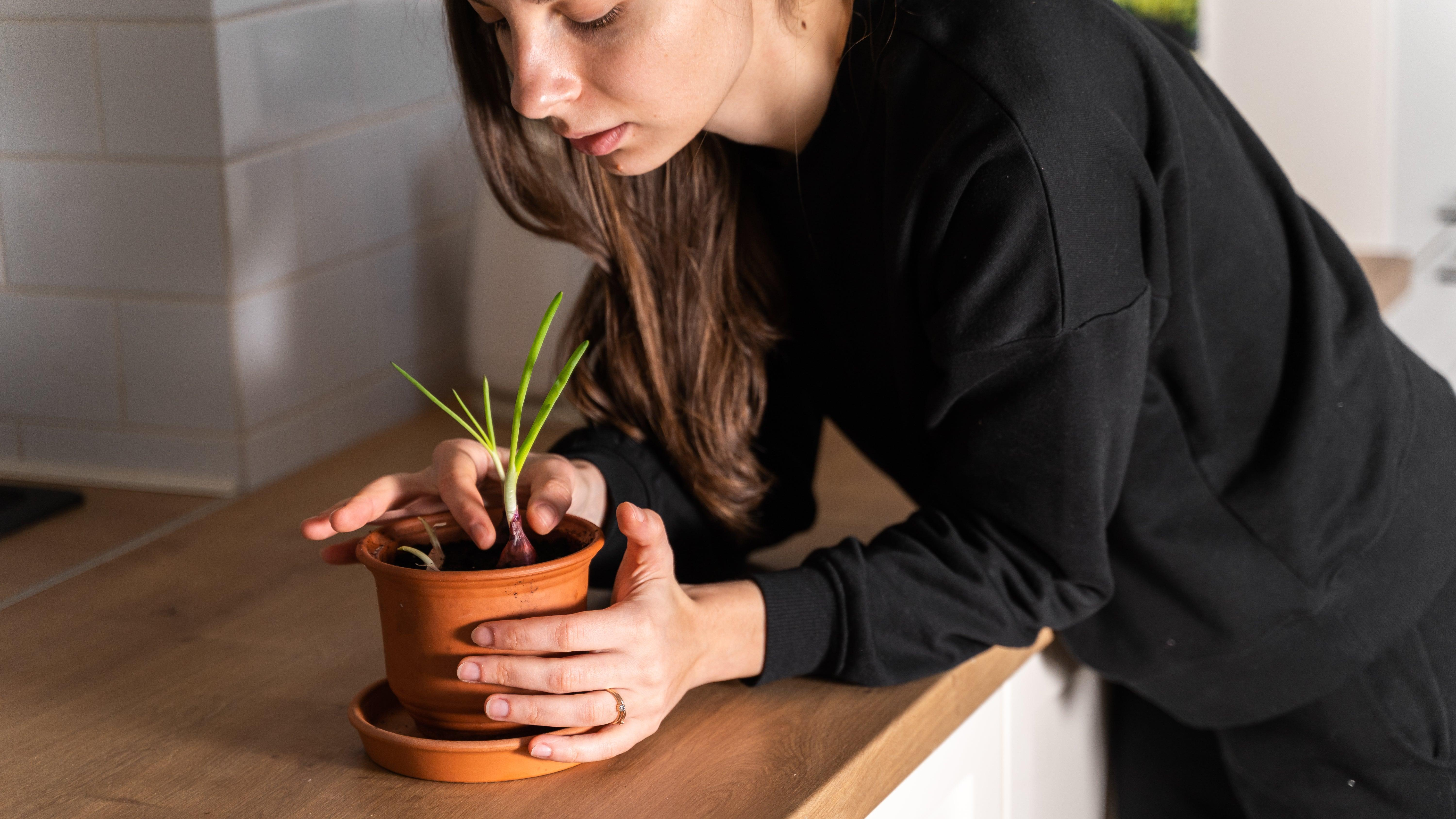Herbs That Won't Die, No Matter How Many Plants You've Killed
Avoid all future charges of apartment herbicide with these easy-to-grow plants.
We may receive a commission on purchases made from links.
As someone who managed to kill two different "easy care" plants within 72 hours of purchase, I consider low maintenance the name of the game. In addition to brightening up your home visually, growing your own herbs and picking them fresh for use in recipes can step up your cooking as well. The real challenge is keeping the damn things alive.
If you lack that green thumb, then a bit of research is key to breaking the cycle of failure. A special bonus to growing these herbs indoors is that you don't have to worry about seasonality for any of them so long as you keep your home at a comfortable temperature.
For all you serial plant killers who want to spice up your home cooking, we've got some tips on the easiest herbs to grow and care for.
Thyme
Caring for thyme won't take up much of your time. (Sorry.) Better yet, this herb is super versatile; you can use it to flavor a juicy steak one night and then mix it up in your egg scramble the next morning. It gives off a delicious aroma, both while cooking it and while it's growing on your windowsill.
Thyme is great for someone who neglects their plants because there's a bigger risk of overwatering this herb than under-watering it. If you choose to add thyme to your indoor herb garden, be sure to put it in a container that drains well. In addition to good drainage, you'll also want to make sure your little herb gets plenty of thyme in the sun (sorry again). If you can't find a place in your home with direct sunlight, just place your thyme in one of the brightest spots you can find.
When you're ready to harvest your hard work, you can just clip a bit of the plant off, stems and all.
Rosemary
Much like thyme, rosemary is aromatic and will fill your kitchen with a fresh scent all year round. In addition to seasoning dishes, Rosemary actually has some health benefits such as helping to improve memory and concentration as well as being a good source of iron, calcium, and vitamin B-6.
Rosemary needs a good drainage system. You may want to consider growing rosemary in a container with a drainage tray that you can dump out when necessary. Once again, the key is to keep your herb hydrated but not drowning at the roots. Only water it whenever the surface of the soil feels dry to the touch. As for light exposure, rosemary needs to soak up the rays, so a sunny windowsill is ideal.
Rosemary is easily harvested by just clipping off a stem with its leaves and either plucking off the leaves to use in a dish, or placing the whole sprig in a recipe for garnish. No fuss at all.
Cilantro
Fun fact: Cilantro is actually a two-for-one deal, since cilantro and coriander are essentially the same thing. Technically, "cilantro" refers to the leaves of the plant while "coriander spice" more specifically means the dried seeds of the plant. The two can be used interchangeably in recipes, explains Master Class.
With cilantro, it's less about frequent watering with your cilantro and more about a thorough watering. And though cilantro benefits from sunlight, using an artificial growing light might actually lead to better results. So, if your apartment or home is lacking in natural light opportunities, a little lamp setup could help you be a successful cilantro gardener.
When you're ready to enjoy the fruits of your labor, you'll need to be a bit more delicate with cilantro so that it keeps growing after you harvest some. Just give it a little pinch and clip from its growing point.
Chives
I have to admit that when cooking at home I usually don't go the extra mile of garnishing my plates. But if I had the garnish growing fresh right in front of me, I'd be more inclined to snip a bit off and sprinkle it atop my mashed potatoes. That is why chives are a perfect first step to incorporating garnish in home cooking.
One of the benefits of growing chives is that they don't need a lot of room to grow, so you can plant them in very small spaces. The running theme of good drainage continues with chives, and using artificial light is absolutely okay if you don't have enough sun in your home.
A quick clip to harvest your chives is perfectly fine. Just be sure not to cut too low on the plant, or your herbs won't continue to grow. Aim for about 2″ above the soil line.
Oregano
Oregano comes in a few different varieties. including Greek, Italian, Mexican, Cuban, and others. However, they're all aromatic and can be grown pretty easily indoors.
Oregano doesn't need frequent watering. So long as it's put in a container with easy drainage, you can trust it won't develop root rot (which happens when a plant's roots get too much water). Natural sunlight or artificial growing light are both acceptable methods for growing oregano.
Between the decorative benefit, the aromatic lift, and improvement to meal quality, growing herbs at home is looking like an achievable goal even for a gardening failure like myself. I just have to remember the importance of proper drainage and then I'm halfway to success with these babies.
